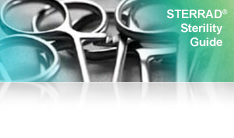The Role of Hydrogen Peroxide in Infection Prevention
There is evidence that a mist of hydrogen peroxide can be an effective method for Automated Area Decontamination and be an important part of an infection prevention program. This is the conclusion of a systematic review by Falagas ME, et al. published in the Journal of Hospital Infection in 2011. Ten different studies on the usage of hydrogen peroxide for area decontamination were reviewed and showed significant results for the termination of infectious pathogens.
Airborne hydrogen peroxide is an effective method for infection control of the inanimate environment of a hospital, according to a systematic review of published clinical evidence.
The report: Falagas ME, et al., Airborne hydrogen peroxide for disinfection of the hospital environment and infection control: a systematic review, Journal of Hospital Infection (2011), examined 10 separate studies into the use of hydrogen peroxide.
It found that between 0 and 4 per cent of sites that were cleaned and then decontaminated with the hydrogen peroxide contained any dangerous pathogens that can cause disease to spread in healthcare environments.
The report stated that hydrogen peroxide also helped to terminate outbreaks of dangerous infections across different healthcare environments.
“The evaluation of the relevant data extracted from the 10 studies included in our review indicates that airborne hydrogen peroxide, either in the form of vapour or dry mist, can be an effective method of disinfection of the hospital inanimate environment.
“In all included studies, fewer environmental sites were found to be culture-positive for the studied pathogens after the application of airborne hydrogen peroxide in comparison with the control cleaning methods; moreover, complete or almost complete disinfection of the sampled hospital sites was achieved with airborne hydrogen peroxide.”
The aim of the review was to investigate the effectiveness of airborne hydrogen peroxide in a hospital environment and as an infection control method. Reviewers searched through different studies of the use of hydrogen peroxide across hospital environments – including multi-bed wards, isolation rooms, bathrooms and utility rooms. Of the results, hydrogen peroxide was shown to reduce the area of contamination dramatically after initial terminal cleaning.
Before any cleaning, 39 per cent of sites were found to be contaminated, after terminal cleaning the amount dropped to 28.3 per cent and following disinfection with hydrogen peroxide only 2.2 per cent of areas were contaminated.
The review found evidence of hydrogen peroxide being an effective infection control measure.
“The implementation of airborne hydrogen peroxide disinfection contributed to the termination of a Serratia spp. outbreak at a neonatal ICU and a polyclonal MRSA outbreak at a 28-bed surgical ward, respectively. In an additional study, the use of airborne hydrogen peroxide disinfection led to the eradication of persistent MRSA environmental contamination in a 20-bed surgical ward.
“In the study, airborne hydrogen peroxide disinfection of five wards of a 500-bed university-affiliated hospital with the highest incidence of C. difficile-associated disease was related to significant reduction of the incidence of C. difficile in the hospital.”
The review concluded that using hydrogen peroxide gave additional benefits to other cleaning systems as shown in the comprehensive results in decontamination from the studies carried out.
Receive ASP news and updates on a regular basis - click here.






